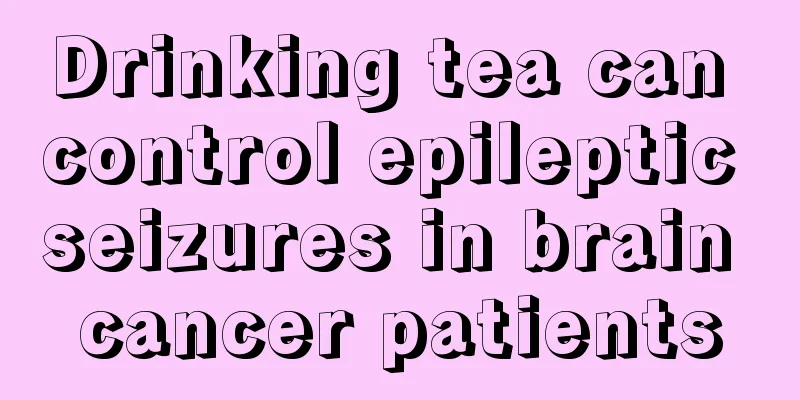Diffuse enhancement of liver parenchyma echogenicity

|
I believe that many people do not know what the symptom of diffuse increased echogenicity of the liver parenchyma means, nor do they know what symptoms it will cause. Therefore, it is recommended that everyone should learn more about the content of the article to increase everyone's understanding of liver disease. Diffuse enhancement of liver parenchymal echo means that the sound of liver echo test is relatively loud, which means that there may be nodules or cirrhosis in the liver, and CT scan is needed to check the cause of the lesion. Under normal circumstances, the echoes inside the liver are composed of tiny light spots of similar size, similar brightness, and even distribution. The intrahepatic echo becomes thicker and stronger with the progression of chronic liver damage, and the echo contrast between the liver and kidneys increases. In patients with obvious connective tissue hyperplasia, diffuse linear echoes can be seen in the liver parenchyma, and sometimes small nodular echoes can be seen. These changes can occur in both chronic hepatitis and cirrhosis. Generally speaking, it is difficult to make a qualitative diagnosis of chronic hepatitis by ultrasound because its pathological changes are diffuse and lack specific manifestations on the sonogram. However, in cirrhosis, the echogenicity of the liver parenchyma changes significantly, and ultrasound findings are of high value in its diagnosis. The echo characteristics of liver parenchyma in cirrhosis are: thickening and enhancement of echoes, and plaque-like strong echo areas can be seen; scanning with appropriate gain conditions, many low-echo small nodules are seen embedded in the liver parenchyma, the former are caused by fibrosis, and the latter are regenerative nodules; as the lesion progresses, liver structure disorder and inhomogeneous changes in liver parenchyma appear, which need to be differentiated from the sonograms of diffuse liver cancer. examine: (I) Doppler spectrum analysis: The analysis of the Doppler spectrum of the hepatic vein and portal vein can be used as a quantitative detection method for diffuse liver lesions and is of great significance in indicating the degree of liver damage. 1. Hepatic venous Doppler spectrum can sensitively reflect changes in liver hemodynamics and liver texture. Abnormalities in the hepatic venous spectrum are significantly correlated with hepatic steatosis, fibrosis, and cirrhosis. 2. The portal vein Doppler spectrum can accurately measure the direction and velocity of portal vein blood flow, thereby indirectly reflecting the pressure changes in the portal vein. In chronic hepatitis and cirrhosis, fibrous tissue hyperplasia or pseudolobule formation causes structural changes in the hepatic portal area, increased pre-sinusoidal pressure in the sinusoids, increased portal vein pressure, and a slowing of portal vein flow velocity. Measurement of portal vein blood flow direction and velocity can indicate the status of portal vein pressure and collateral circulation. (ii) Ultrasound diagnosis: The patients fasted for more than 8 to 12 hours and underwent multi-section scanning in the supine and left lateral decubitus positions to observe the liver capsule, liver margin morphology, liver parenchyma echo, hepatic vein course and venous wall morphology, and changes in the gallbladder and spleen. (III) Histological examination: Ultrasound-guided percutaneous liver puncture biopsy for histological examination is recognized at home and abroad as the "gold standard" for judging liver damage. It is quick to operate and has a high success rate. Treatment principles: 1. Diet: high in vitamins, low in salt, and no alcohol. 2. Rest: Patients in the compensatory stage should not overwork, and patients in the decompensated stage should rest in bed to protect the liver. Experts believe that rest is more effective than drug treatment and can better improve the liver's own immunity. Emotions: Patients with liver disease are prone to irritability, anger, and violent mood changes, which can stimulate the body to produce a stress response and cause changes in the human endocrine system. The liver and endocrine glands are closely related in function and can promote the synthesis, transformation and decomposition of certain hormones. When angry, it causes the secretion of adrenaline, which stimulates liver cells to secrete GPT in the liver cells into the serum, causing the liver cells to be further damaged. Keeping a happy mood will help you recover. |
<<: How long does it usually take to extract wisdom teeth
>>: The difference between salted sea cucumber and dried sea cucumber
Recommend
Will drinking more water make your skin whiter?
There are many kinds of skin colors, including wh...
Do anti-cancer health supplements really fight cancer?
In recent years, many middle-aged and elderly peo...
Teach you to recognize the early symptoms of colorectal cancer!
Common symptoms of colorectal cancer: The symptom...
Pain in the upper right back?
Back pain is a relatively common phenomenon. Ther...
How long does it take to get the results of cervical cancer examination
Cervical cancer is a malignant tumor that threate...
Causes of itchy skin due to gallbladder cancer
Cancer is very common in our lives. Once we suffe...
What are the symptoms of leukoencephalopathy?
Symptoms of leukoencephalopathy usually include i...
Myocardial infarction diet
With the continuous development of science and te...
Homemade recipe for sweet and sour pork shreds
In life, many people have different preferences a...
What is a fungal smear test
With the improvement of our living standards, mor...
Radical resection for pancreatic cancer
Pancreatic cancer is usually discovered when jaun...
Can sea crabs be frozen and preserved?
Many people in our lives like to eat crabs, espec...
Does tile adhesive contain formaldehyde?
In fact, many things used in households now conta...
How can we improve sleep quality in the environment?
Many people have poor sleep quality at night due ...
Is millet pepper a pickled pepper? What is the nutritional value of millet pepper?
Pickled peppers are an ingredient that we often e...









